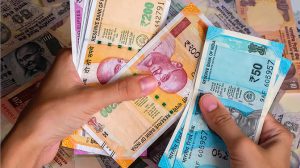Bloomberg
India’s central bank raised the key interest rate for a second straight month and pledged to withdraw the pandemic-era accommodation as it steps up its fight to tame prices that have been running above its target band since beginning of year.
The Reserve Bank of India’s rate setting panel unanimously raised the repurchase rate by 50 basis points to 4.90%. Of the 41 economists in a Bloomberg survey, 17 expected a 50 basis point hike, while the rest penciled in increases ranging from 25 basis points to 75 basis points. The increase was the biggest by the central bank in more than a decade.
“Inflation has steeply increased much beyond upper tolerance level,†said RBI Governor Shaktikanta Das in an online briefing, adding that sustained high prices could unhinge inflationary expectations and trigger second-round effects.
Central banks worldwide are grappling with worse-than-anticipated inflation driven by supply chain disruptions, virus lockdowns and the war in Ukraine. India joins more than 50 monetary authorities, including the Federal Reserve, to have raised rates by atleast a half-point in one move this year.
The central bank raised its inflation forecast for the year ending March to 6.7% from 5.7% seen previously. That would be outside the RBI’s mandated target range of 2%-6% and shows the rate setting panel’s struggle to keep prices in check. With inflation set to hover above the tolerance level for three quarters, the central bank also withdrew its intention of “staying accommodative.â€
Under Indian laws, if inflation stays above 6% for three straight quarters, the central bank will have to write a letter to the government laying out the reasons for failing to meet its mandate as well as suggest remedial measures to bring prices under control.
“The MPC, therefore, judged that further monetary policy measures are necessary to anchor the inflation expectations,†Das said.
The 50 basis point hike on Wednesday was reflective of inflation “elbowing its way to the top of the RBI’s priority list,†said Aurodeep Nandi, an economist at Nomura Holdings Inc. “We believe that we are still far from the finishing line and that more front-loaded rate hikes are on the offing,†he said.
Given the rate hike was mostly baked in and Das assured investors that government’s massive borrowing program would be supported, sovereign bonds rallied with the shorter-end outperforming. The yield on four-year debt fell by 13 basis points to 7.14%, while the rupee traded little changed. Stocks edged higher, with shares sensitive to the interest rate cycle leading.
Das said the central bank is watching the government bond market ‘very closely’ and will stay focused on an orderly completion of the borrowing program. India had earlier budgeted to raise about 14.3 trillion rupees through debt issuances in the year through March 2023. Its $26 billion package, including tax cuts and subsidies, to ease price pressures is likely to see a rise in the borrowing plan.
India’s central bank signalled a shift in policy focus as it ramped up efforts to mop up excess liquidity in the banking system and raised its inflation forecasts, sending bond yields higher.
“With the move, the central bank is shoring up its credentials as an inflation fighter – and that should help tamp down expectations among consumers and businesses that prices will keep rising,†said Abhishek Gupta, a Bloomberg economist.
The RBI has also allowed enhancements to India’s Unified Payments Interface. To deepen the reach and usage it will allow linking of credit cards to the UPI.
Economists said the central bank’s focus on inflation meant it wanted rates to return to pre-Covid levels as soon as possible even if it meant sacrificing growth.
“Experience teaches us that preserving price stability is the best guarantee to ensure lasting growth and prosperity,†Das said. “Our actions must demonstrate the commitment to keep inflation and inflationary expectations under check.â€
 The Gulf Time Newspaper One of the finest business newspapers in the UAE brought to you by our professional writers and editors.
The Gulf Time Newspaper One of the finest business newspapers in the UAE brought to you by our professional writers and editors.
